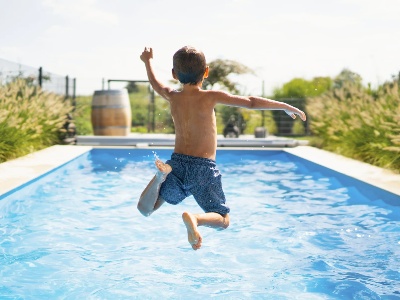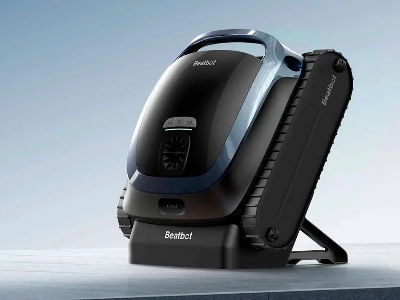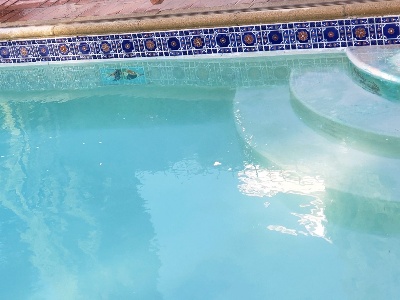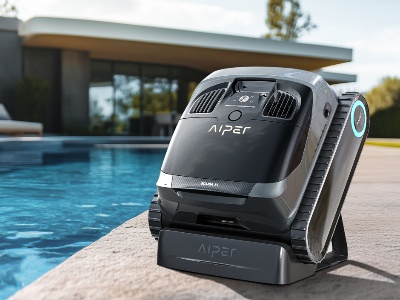Having a swimming pool at home is synonymous with relaxation and pleasure. However, to fully enjoy it, it is essential to maintain clean and healthy water. Purifying swimming pool water relies on a combination of mechanical filtration and chemical or ecological treatments. In this article, we will explore the different methods for purifying your pool water, focusing on traditional and innovative solutions, to help you choose the one that best suits your needs.
The essential role of mechanical filtration
Mechanical filtration is the crucial first step in the process of purifying your pool water. It removes visible impurities such as leaves, insects and other debris. The filtration system generally consists of a pump that draws water from the pool, directs it to a filter where particles are retained, and then returns it clean to the pool via the delivery nozzles. There are several types of filters:
- Sand filters: The water passes through a bed of sand that retains impurities. This type of filter is appreciated for its ease of use and affordability.
- Cartridge filters: Use filter cartridges to capture debris. They offer superior filtration fineness and are easy to maintain.
- Diatomaceous earth filters: Considered the most efficient, they use diatomaceous earth powder to filter extremely fine particles, ensuring crystal clear water.
Regular maintenance of the filtration system is essential to guarantee its efficiency. This includes cleaning or replacing the filter elements and checking that the pump is working properly.
Traditional chemical treatments: chlorine and bromine
In addition to mechanical filtration, the use of chemicals is necessary to eliminate micro-organisms and prevent the proliferation of algae. Chlorine is the most commonly used disinfectant for treating swimming pool water. It is available in different forms, such as tablets, granules or liquids, and is effective against bacteria, viruses and algae. However, it can cause skin and eye irritation in some sensitive individuals. Bromine is an interesting alternative to chlorine. Less irritating and odourless, it is particularly effective in warm water, making it ideal for spas. However, it is generally more expensive than chlorine.
Environmentally friendly solutions: salt electrolysis, UV and ozone
For those looking for more environmentally friendly alternatives, there are several options available:
- Salt electrolysis: This system transforms the salt added to the water into natural chlorine through an electrolysis process. It provides continuous disinfection and reduces the need to add chemicals. In addition, the water is gentler on the skin and eyes. UV treatment: The water passes through a chamber equipped with lamps that emit ultraviolet rays that destroy micro-organisms. Although very effective, this system does not leave any disinfectant residue in the water, which often requires the addition of a complementary product.
- Ozonation: Ozone is a powerful oxidant that eliminates organic and inorganic contaminants. Generated on site, it disinfects the water without leaving harmful by-products. However, its installation and maintenance can be costly.
Maintaining the chemical balance of the water
In addition to disinfection, it is crucial to regularly monitor and adjust the chemical parameters of the water to ensure optimal treatment efficiency and the comfort of bathers. The main parameters to be monitored are:
- pH: Ideally between 7.2 and 7.4, a balanced pH guarantees the effectiveness of disinfectants and prevents irritation.
- Total Alkalinity (TA): This stabilises the pH and should be between 80 and 120 mg/L.
- Calcium Hardness (CH): This indicates the calcium concentration in the water. Water that is too hard can lead to limescale deposits, while water that is too soft can be corrosive.
Analysis kits are available to measure these parameters and adjust the levels accordingly using specific products.
The importance of regular cleaning
Regular physical maintenance of the pool complements the chemical and mechanical actions for perfectly clean water. This includes:
- Cleaning the walls and bottom: Use a brush or vacuum cleaner to remove deposits and algae.
- Skimmer maintenance: Empty and clean the skimmer baskets to ensure good water circulation.
- Use of cleaning robots: Automatic robots, such as AquaSense 2 Pro or AquaSense 2 Ultra by BEATBOT, feature exclusive clarification technology that filters fine particles while ensuring autonomous cleaning of surfaces. Their ClearWater™ filtration system instantly improves water clarity, even after intensive swimming or a windy day.
For floating debris and surface residue, the
iSkim Ultra skimmer robot from
BEATBOT effectively complements the mechanical cleaning action thanks to its ability to capture micro-impurities as soon as they appear.
Preventing common problems
Careful monitoring and preventive measures can help avoid inconveniences such as cloudy or green water or the formation of algae. In addition to regular treatments, it is recommended to use anti-algae products as a preventive measure, to frequently check the chemical parameters and to ensure that the filtration system is working properly. In the event of a problem, shock treatments may be necessary to quickly restore healthy water.
Towards optimised water quality management
Maintaining pure and healthy pool water requires a combination of effective filtration, appropriate treatments and regular maintenance. By choosing the methods that best suit your needs and keeping a close eye on your pool's parameters, you can guarantee water of the highest quality. Modern technologies, such as those integrated into BEATBOT robots, make this task much easier by ensuring continuous water clarification without manual intervention. This gives you peace of mind, more comfortable swimming and longer-lasting facilities, while allowing you to enjoy your pool to the full, day after day.







